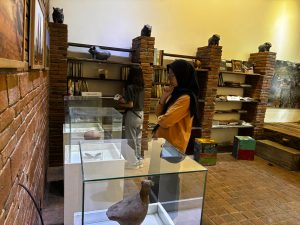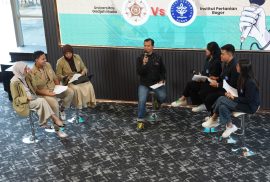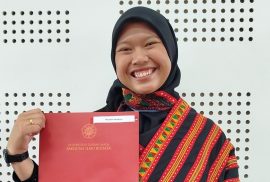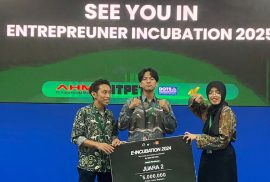
In an effort to promote education for sustainability, Mandala Majapahit, located in the Margono Building of the Faculty of Cultural Sciences (FIB) at Gadjah Mada University (UGM), serves as a vital learning resource for students. This unique corner, managed by the Department of Archaeology, focuses on the study of issues related to ancient Javanese civilization.
Mandala Majapahit is open every weekday, providing a welcoming environment for students to explore the rich history of Java. The facility is designed to encourage learning through various means, including viewing artifacts, reading books, and engaging in discussions about archaeological and historical issues. This initiative aligns with the Sustainable Development Goals (SDGs), particularly in promoting quality education and deepening understanding of cultural heritage.
The Department of Archaeology has curated a collection of artifacts and literature that reflect the complexity of ancient Javanese society. Students can immerse themselves in the history of the Majapahit Kingdom, one of the largest kingdoms in Southeast Asia. By studying these materials, students gain insights into the socio-political dynamics, trade, and cultural exchanges that shaped the region.
The initiatives at Mandala Majapahit are highly significant in the context of education for sustainability. By understanding the past, students are better prepared to address contemporary issues related to cultural preservation and environmental sustainability. Lessons learned from ancient civilizations can inform current practices and policies, ensuring that future generations inherit a rich cultural heritage.
In conclusion, the Majapahit Mandala stands as a testament to the importance of education in preserving cultural heritage and promoting sustainability. By providing access to resources and fostering discussion, it plays a crucial role in shaping the future of archaeological studies in Indonesia. Students and the general public are invited to utilize these valuable resources, ensuring that lessons from the past continue to inspire future generations.

Written by: Sektiadi, assisted by search.ugm/ai
Picture : Haybah Shabira




